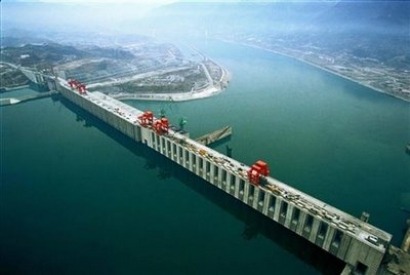Before beginning my fifth and final Civic Issues Blog post, I would like to reiterate the importance for us as a society to continue to expand and improve upon our efforts to develop new and alternative energy sources. Our world’s environment is quickly declining, and we are ever-approaching a critical point for which there will be no return. We must take action now to turn this situation around, and this change can be enacted by each individual.
So for my final blog post, I want to discuss a rather unexplored form of alternative energy. Wind, solar, nuclear, and hydroelectric power are some common sources of alternative energy that often come to mind. However, one that does not pop into one’s head is tidal or ocean energy. There has been a recent push to expand upon this energy source, and for that reason, it is going to be the focus of my blog post.
Tidal energy is a renewable energy that utilizes the flow of ocean water caused by tides to generate electricity. It is still a relatively new and undeveloped form of alternative energy, but the power and potential of tidal and other ocean energies should not be underestimated.
There are three main types of tidal/ocean energy generation being experimented with today. The first one is the production of tidal energy through turbines in tidal streams. A tidal stream is a flowing body of water created by tides. Similar to a wind turbine, water pushes the turbine, causing it to spin, which then creates an electric current. However, because water is much denser than air, tidal energy is more powerful than wind energy. In addition, tides are much more stable and predictable than winds and they, therefore, produce a more reliable stream of energy. These turbines are most effective in shallow waters, which allows ships to navigate around them, and the rather slow turning of the blades in the turbine helps marine life to avoid getting caught in the system. However, as with all energy generation devices, there are disadvantages to this system. For this particular method to tidal energy generation, placing turbines in tidal streams is complex. The machines are large ad disrupt tides, which could have considerable environmental impact.

http://www.maritimejournal.com/news101/comment-and-analysis/mct_moves_for_money_men
The second method of harnessing tidal energy involves the construction of a large dam, called a barrage. Turbines inside the barrage gather the power of tides in a very similar way to how a river dam harnesses the power of a river. At high tide, its gate closes, creating a tidal lagoon, which is then released through the barrage’s turbines, creating energy at a rate that can be controlled by an engineer. There a lot of relative disadvantages to this particular system, however. Barrages are much more expensive than a single turbine, and there are a considerable more amount of construction and machine costs. Barrages require constant supervision, as well. In addition, the effects these constructions can have on the environment can be significant. The tidal range is disrupted, which can interfere with plant and animal life. The salinity inside tidal lagoons also changes, changing what organisms can thrive there, and the speed with which turbines turn inside the barrage can cause marine life to get caught.
A third way of creating energy from the ocean is not necessarily a tidal method. This method includes energy generation through ocean thermal energy conversion. For this method, you essentially use warm surface water to heat ammonia, which has a relatively low boiling point. This creates steam, which drives a turbine, creating an electric current.
Today, tidal and ocean energy production is still rather untapped. However, China is looking to change all of that. The country recently has started to invest a large amount of money into developing ocean energy and has entered into ventures with companies, such as Lockheed Martin, to develop various tidal projects. With 11,000 miles of coastline rich in energy potential and an ever-increasing pollution dilemma, China is seen as having the potential to unlock this energy source.
China is experimenting with all 3 types of ocean energy production. Ventures, such as an underwater turbine farm and thermal energy conversion, are in the works. China’s most grandiose idea, however, is the construction of a dynamic power wall that would span 20 miles and would be studded with turbines that would channel and concentrate the power of tidal water. If approved, the wall could supply as much electricity as 2 ½ large nuclear reactors and could produce electricity more cheaply than offshore wind farms.
http://www.renewableenergymagazine.com/article/china-to-develop-tidal-power-based-on-20121012
Creating energy from the ocean is still rather expensive, but China looks to make it a more economical and viable source in the future. This could increase competition between China and the West, repeating what happened in wind and solar sectors.
Ocean energy production will become increasingly popular in the future. The ocean covers 71% of the Earth’s surface, making it an extremely abundant source, and its tides and flows are much more stable than winds. If we can figure out how to more cheaply produce ocean energy, which I believe we will, then it will eventually be a hard source to compete with in the future.
For more on tidal and ocean energy, look at these sources:

I briefly read some stuff on tidal power when I was researching hydroelectric, but those articles made it seem like it wasn’t really be utilized as much as it clearly is. It makes sense to try to harness the energy because it’s not like deep sea currents really die out, especially if these turbines and dams are strategically built in places with incredibly strong currents.
I’ve never heard of this alternative source of energy, but it sounds awesome. I feel a little bit duller for my posts because they are so general. Way to stick out and be innovative!